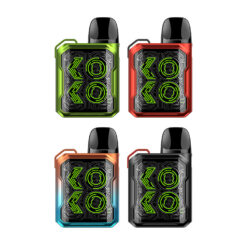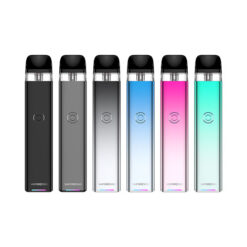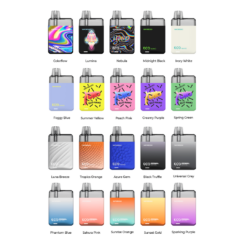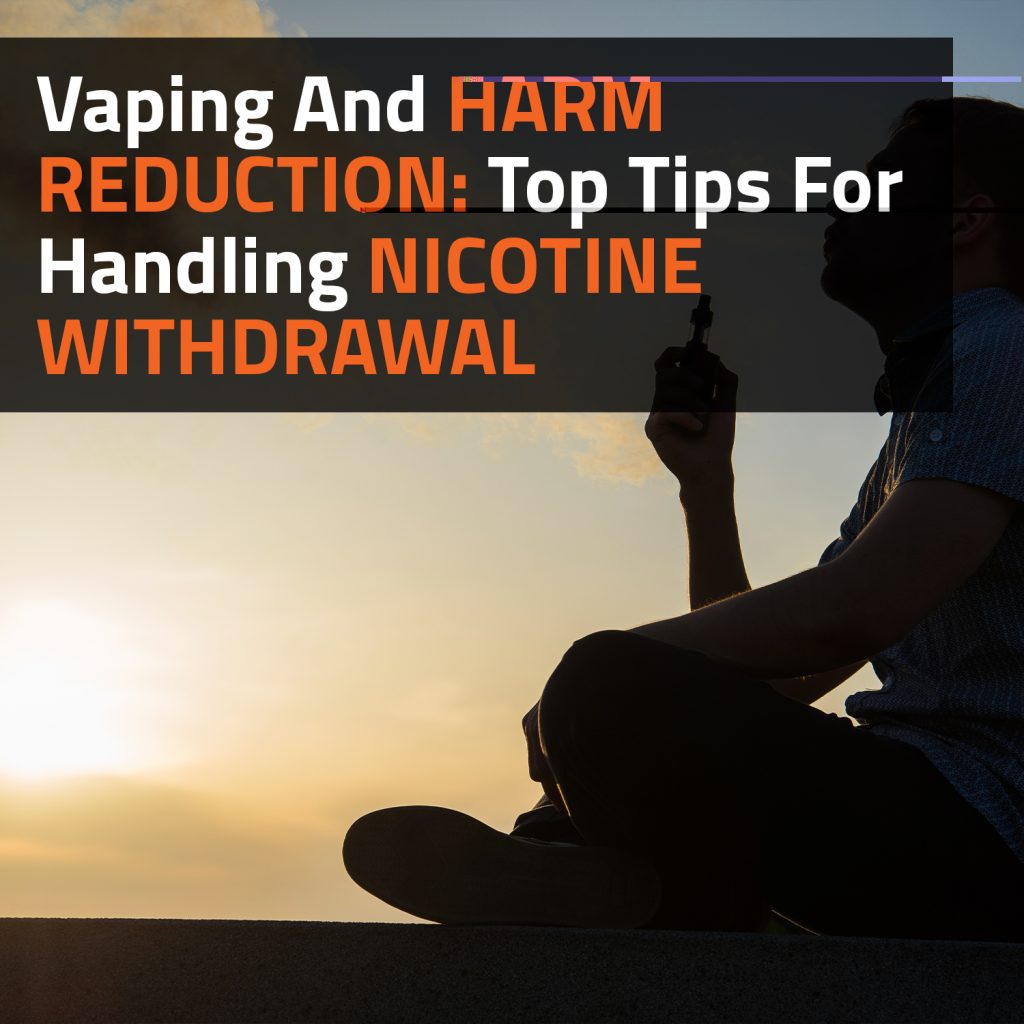In the complex landscape of nicotine use and dependency, individuals seeking to break free from the grip of tobacco often turn to vaping as a harm reduction strategy. While the transition to vaping can offer a less harmful alternative, navigating the path to nicotine freedom is not without its challenges.
Nicotine withdrawal is a formidable hurdle that many face during this journey. By understanding the process, employing effective strategies, and embracing a supportive approach, individuals can enhance their chances of successfully overcoming nicotine dependence while minimising potential health risks. Whether you’re considering making the switch or are already on the path to a nicotine-free life, these tips can serve as a valuable guide on your journey towards improved well-being.
Understanding Nicotine Withdrawal
Nicotine withdrawal is a crucial aspect of the journey toward a tobacco-free life, whether one is transitioning from traditional cigarettes to vaping or contemplating complete nicotine cessation. As a highly addictive substance, nicotine creates a physiological dependence, and when its regular intake is disrupted, the body and mind react. Withdrawal symptoms can vary in intensity and duration, manifesting as:
- Irritability
- Mood swings
- Difficulty concentrating
- Increased appetite
- Strong cravings for nicotine
One of the key components of understanding nicotine withdrawal is recognising that it is a temporary but challenging phase. The body’s adjustment to the absence of nicotine takes time, and each individual’s experience may differ. Withdrawal symptoms typically peak within the first few days of abstinence and gradually subside over a few weeks. Mental and emotional aspects are integral components of this process, and individuals may find themselves grappling with psychological cravings long after the physical symptoms have diminished.
The Role Of Vaping In Harm Reduction
Vaping has emerged as a prominent strategy for harm reduction, offering an alternative to traditional tobacco smoking that is considered less detrimental to health. The core principle underlying harm reduction is to minimise the negative consequences associated with a behaviour rather than insisting on complete abstinence. In the context of nicotine use, vaping serves as a transitional tool for those seeking a less harmful way to consume nicotine compared to traditional combustible cigarettes.
One of the key advantages of vaping in harm reduction lies in the elimination of many harmful chemicals produced by the combustion of tobacco. While traditional smoking involves inhaling a cocktail of toxins and carcinogens, vaping devices heat e-liquids to create an aerosol, commonly known as vapour. This process significantly reduces exposure to harmful substances, providing a cleaner and potentially less harmful method of nicotine delivery.
Moreover, vaping allows for greater control over nicotine intake. E-liquids come in various nicotine concentrations, providing users with the flexibility to choose the level that matches their current needs. This level of customisation enables individuals to gradually reduce their nicotine consumption over time, a crucial aspect of harm reduction and the journey towards becoming nicotine-free.
Gradual Nicotine Reduction Strategies
Embarking on a journey towards reduced nicotine consumption is a commendable step for individuals seeking harm reduction through vaping. Gradual nicotine reduction strategies play a pivotal role in this process, allowing users to taper their nicotine intake at a pace that suits their comfort level. Here are some effective strategies to consider:
- Choose Lower Nicotine Strengths: Start by selecting e-liquids with lower nicotine concentrations. Most e-liquids come in a range of strengths, providing options for users to gradually step down from higher to lower nicotine levels.
- Monitor Nicotine Intake: Keep track of your vaping habits and nicotine consumption. This awareness enables you to identify patterns, understand your triggers, and make informed decisions about when and how to adjust your nicotine levels.
- Set Realistic Goals: Establish achievable milestones for reducing nicotine intake. Setting realistic goals ensures a steady and manageable progression, making the overall journey more sustainable and less overwhelming.
- Extend Vaping Sessions: Instead of reaching for your vaping device automatically, consider extending the time between vaping sessions. This approach helps break the cycle of constant nicotine exposure and allows for a gradual reduction in dependency.
- Mix Lower Nicotine Levels: Experiment with diluting e-liquids to achieve a lower nicotine concentration. This DIY approach allows users to customise their nicotine levels, providing a more tailored and controlled reduction strategy.
- Seek Professional Guidance: Consult with healthcare professionals or vaping experts to receive personalised advice on nicotine reduction. They can offer guidance based on your individual needs, ensuring a safe and effective approach to harm reduction.
- Alternate Nicotine Levels: Rotate between e-liquids with different nicotine concentrations. Alternating between higher and lower strengths can help ease the transition and minimise withdrawal symptoms.
- Stay Hydrated and Engaged: Hydration is key during nicotine reduction, as it can help alleviate some common withdrawal symptoms. Additionally, keeping yourself engaged in activities can distract from cravings and contribute to an overall sense of well-being.
Choosing The Right Vaping Devices
Selecting the appropriate vaping device is a crucial aspect of the harm reduction journey, as different devices cater to varied preferences and nicotine delivery needs. The market offers a diverse range of vaping devices, each with its features and advantages.
Pod Systems Vs. Mods
Compact and user-friendly, pod systems are ideal for beginners. They often come with pre-filled or refillable pods, offering convenience and simplicity. More advanced users might opt for mods, which allow for customisation of settings like wattage and airflow. Mods are versatile and can accommodate a broader range of e-liquids.
-
UWELL Caliburn GK2 Kit
R495.00Original price was: R495.00.R247.50Current price is: R247.50. -
Vaporesso XROS 3 Kit
R540.00Original price was: R540.00.R380.00Current price is: R380.00. -
Vaporesso ECO NANO Kit
R235.00 – R295.00 -
Smok Nord 50W Kit
R550.00Original price was: R550.00.R410.00Current price is: R410.00.
Nicotine Delivery
Consider your preferred inhalation style. MTL devices mimic the sensation of smoking traditional cigarettes, making them suitable for those transitioning. DTL devices provide a more direct lung hit and are favoured by experienced vapers.
Nicotine Salts Vs. Freebase Nicotine
Common in pod systems, nicotine salts deliver a smoother throat hit and are absorbed more quickly, making them suitable for higher nicotine concentrations. Freebase nicotine is suitable for those who prefer lower concentrations and a traditional throat hit.
Battery Life And Charging
Consider the battery life of the device, especially if you’re a heavy vaper. Devices with larger batteries or replaceable batteries may be preferable. Additionally, quick charging features can be advantageous.
Coil Resistance And Wattage Range
Understanding the coil resistance and wattage range of your device is essential. Different coils are designed for specific wattage levels, affecting vapour production and nicotine delivery.
Embarking on the path to nicotine freedom through vaping and harm reduction involves a multifaceted journey, marked by challenges, triumphs, and transformative lifestyle changes. Understanding nicotine withdrawal, utilising vaping as a harm reduction tool, implementing gradual nicotine reduction strategies, choosing the right vaping devices, and adopting healthy lifestyle changes are key components of this empowering process. As individuals navigate the complexities of breaking free from nicotine dependence, it’s crucial to approach the journey with patience, resilience, and a commitment to self-improvement.
By embracing a supportive network, celebrating milestones, and seeking professional guidance when needed, one can navigate the hurdles of withdrawal with greater ease. Remember, the pursuit of a nicotine-free life is not just a cessation of a habit; it’s a journey toward a healthier, more fulfilling, and liberated existence. Your commitment to this journey signifies a profound investment in your well-being, setting the stage for a brighter, nicotine-free future.










